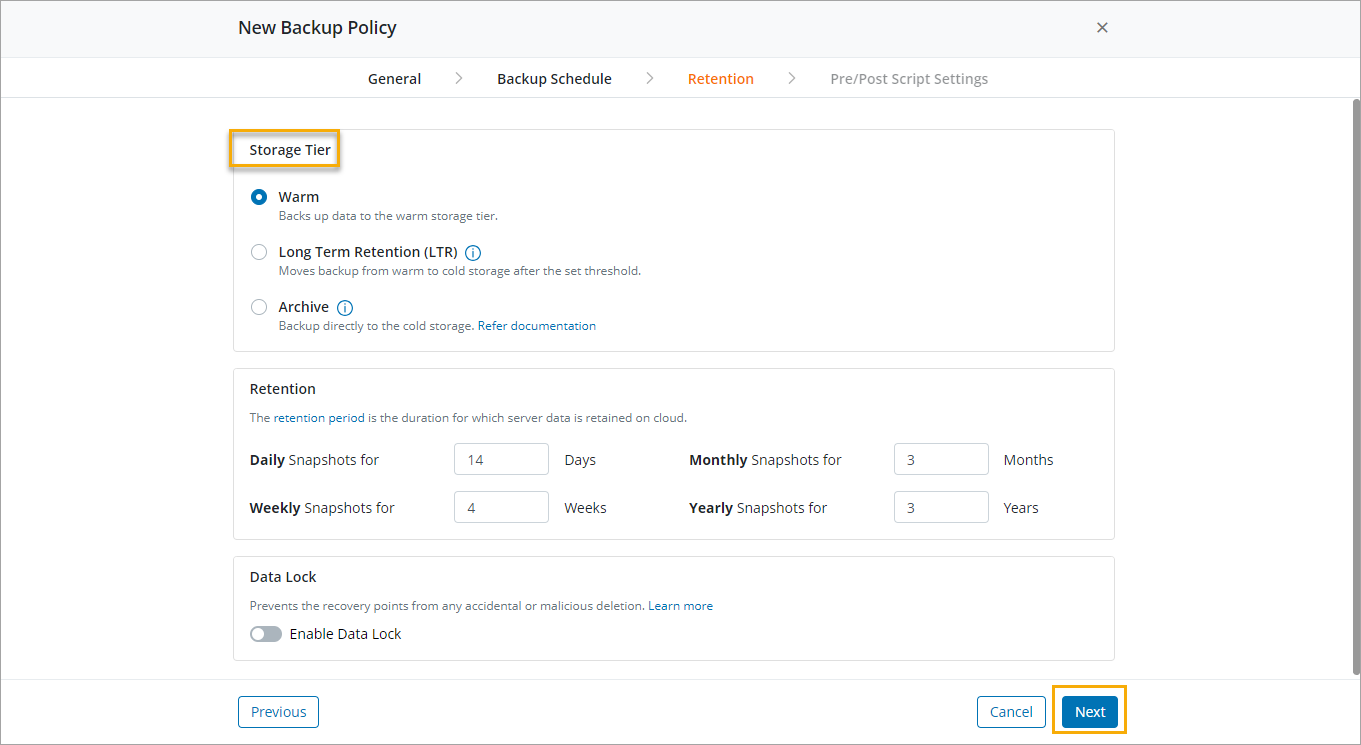This topic provides instructions to create a backup policy for the File servers.
Step 3: Define retention
In the Retention tab, select the storage tier and enter the duration for which the daily, monthly, weekly, and yearly recovery points should be retained. Click Next.
Storage Tier settings

You can select Warm, Long Term Retention (LTR), or Archive options.
Warm
By default, the warm storage tier is selected.
In the Retention tab, enter the duration for which the daily, monthly, weekly, and yearly recovery points should be retained.
Long Term Retention (LTR)
Select Long Term Retention (LTR) for backup sets that need to be retained for a year or longer.
In the Retention tab, enter the duration for which the daily, monthly, weekly, and yearly recovery points should be retained and the value of the Long Term Retention Threshold.
Recovery pointss older than the set threshold value are moved to the cold storage. This lowers the total storage cost for the LTR backup sets.
For more information, see About Long Term Retention, and Enabling Long Term Retention.
Archive
Select Archive to move the backup data directly to the cold storage.
In the Retention tab, enter the duration you want to retain the archived data. For example, a retention value of 22 years means that all the recovery points are retained for 22 years.
Archive is used for storing data that is rarely accessed or restored but required to be protected for future reference and compliance purposes. Archive allows you to bypass the warm storage tier and directly backup the data to the cold tier. Data stored in the cold tier incurs up to 50% lower fee.
For more information, see Protect File Server and NAS data in Archive storage tier.
Enable Data Lock
You enable the Data Lock for the backup policy. Data Lock prevents your backup recovery points from accidental or malicious deletion or modification.
Note: Once you apply Data Lock to the backup policy, you cannot:
- Disable Data Lock.
- Delete the recovery points, backup sets, and backup policy.
- Edit the retention period in the backup policy.
- Associate another backup policy to the Data Lock-enabled backup set.
For more information about Data Lock, refer to Data Lock for preventing malicious or accidental deletion of recovery points.
Notes:
 Business
Business  Enterprise
Enterprise  Elite
Elite  Business
Business  Enterprise
Enterprise  Elite
Elite  Business
Business  Enterprise
Enterprise  Elite
Elite